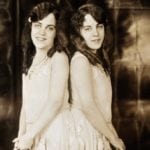 Weird Stuff
Weird Stuff  Weird Stuff
Weird Stuff  Mysteries
Mysteries 10 Tragic Disappearances and Deaths in Joshua Tree National Park
 History
History 10 Ways Childhood Really Sucked in the Old West
 Music
Music 10 Name Origins of Famous Bands from the 1990s
 Religion
Religion 10 Biggest Turnarounds by the Catholic Church
 Weird Stuff
Weird Stuff 10 Unbelievable Times Laws Had Unintended Consequences
 Humans
Humans Ten Historic Women Who Deserve Way More Credit Than They Got
 Movies and TV
Movies and TV 10 Films That Spawned Major Lawsuits
 History
History Ten Times Towns Were Wiped Off the Face of the Earth
 Creepy
Creepy 10 of the Most Disturbingly Haunted Public Houses in the UK
 Weird Stuff
Weird Stuff 10 Niche Subcultures That Are More Popular Than You Might Think
 Mysteries
Mysteries 10 Tragic Disappearances and Deaths in Joshua Tree National Park
 History
History 10 Ways Childhood Really Sucked in the Old West
Who's Behind Listverse?

Jamie Frater
Head Editor
Jamie founded Listverse due to an insatiable desire to share fascinating, obscure, and bizarre facts. He has been a guest speaker on numerous national radio and television stations and is a five time published author.
More About Us Music
Music 10 Name Origins of Famous Bands from the 1990s
 Religion
Religion 10 Biggest Turnarounds by the Catholic Church
 Weird Stuff
Weird Stuff 10 Unbelievable Times Laws Had Unintended Consequences
 Humans
Humans Ten Historic Women Who Deserve Way More Credit Than They Got
 Movies and TV
Movies and TV 10 Films That Spawned Major Lawsuits
 History
History Ten Times Towns Were Wiped Off the Face of the Earth
 Creepy
Creepy 10 of the Most Disturbingly Haunted Public Houses in the UK
10 Famous Nonmonogamous Relationships From History
The course of love and sex is rarely smooth. In fiction, we like to present romance and marriage as a relationship that is universal between lovers, but in real life, every couple is different.
For many famous couples from our history, their most personal relationships were filled with social taboos and secrets only made public long after they were dead and gone. For many of these people, love and sex with one person just wasn’t enough. Here are ten of history’s most interesting nonmonogamous relationships.
10 The Marstons And Byrne
The Creators Of Wonder Woman
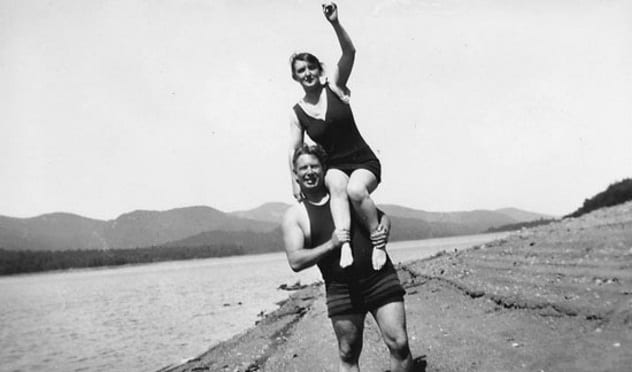
William M. Marston was an American psychologist and a major contributor to an early prototype of the modern lie detector. Marston was far better known by his pen name, however: Charles Moulton, the comic book writer who created Wonder Woman in the 1940s. His authorship of the character was kept secret and caused much shock when the truth finally came to light. But he didn’t come up with Wonder Woman on his own. William Marston’s legal wife was Elizabeth Marston, affectionately nicknamed “Sadie.” If there was one thing husband and wife (pictured above) had in common, it was their jack-of-all-trades nature. They collaborated for several of his psychology reports, and Elizabeth worked many jobs throughout her lifetime, from traveling soap saleswoman to the editor of Encyclopaedia Britannica. Elizabeth was also the person who came up with the idea for a female superhero, and it’s widely suspected that Wonder Woman was largely based on her.
They had a relatively normal, monogamous relationship until Olive Byrne walked into their lives. Olive Byrne was 11 years their junior when they met. Olive was a senior at Tufts University, going by the name Olive Richards for her psychology reviews and interviews. In time, Olive would drop out of her psychology program, move in with the Marstons, and commit full-time as a homemaker for their four children, two of them being Olive’s and two of them being Elizabeth’s. Her influence is less explicit, but there are hints that William also based many of Wonder Woman’s traits on Olive as well. When Olive “married” William, she wore two wide bracelets on each wrist in place of wedding rings, not unlike a certain Amazonian princess.[1]
Their three-person relationship would last until William’s death, after which Elizabeth and Olive lived the rest of their lives together.
9 Anais Nin
The Finest Female Erotic Writer
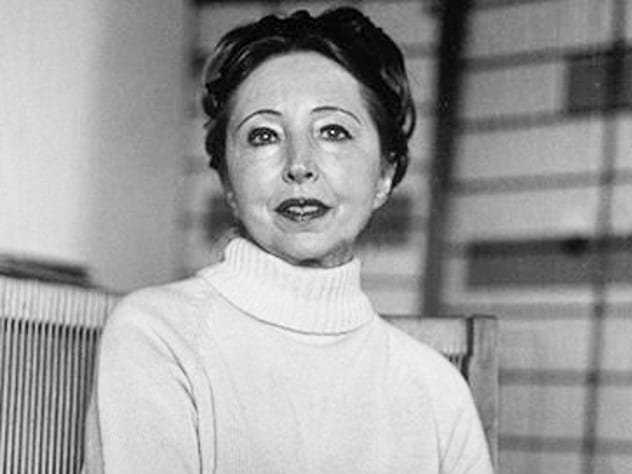
Anais was a Cuban-American writer who was best known for her diaries, which provided insight into her personal life and her acquaintances with many famous figures of her time. Anais was also one of the first successful female erotic writers in the 1970s, her fascination with the erotic likely stemming from her unhealthy relationship with her own sexuality. Anais was raised in a Roman Catholic family but left the Church and school at age 16. Her estranged father, Joaquin Nin, sexually abused her when she was a child, which Anais detailed in her book/diary Incest: From a Journal with Love.
Her unstable relationship with sex and relationships was a factor in Anais’s tendency to cheat on several of her husbands. Rupert Pole and Hugh Guiler were two of her spouses, but unlike her other marriages, Anais went a step further with these two. Anais was legally married to both of them at the same time.
Anais married Guiler, a banker who financially supported her and tolerated her many acts of infidelity throughout their marriage, first. Anais would meet Pole, an American actor, in an elevator while on the way to a party, and she was immediately drawn to his handsome features and the depth of his intellect and sensitivity. This would lead Anais to juggle both relationships for several decades, without either man knowing about the other. Lies built upon lies, which Anais referred to as her “trapeze.” Her relationship with Pole became far more serious than any of her affairs when she married him in 1955. Eventually, however, fearing legal repercussions, Anais invalidated her marriage to Pole but still stayed with him throughout her twilight years.
When she died of cervical cancer in 1977, it is said by a friend of hers named Tristine Rainer that Anais finally confessed her infidelity. Both husbands forgave her and met years later “on a friendly basis, or a mutual husband basis.” Although Pole admitted to some jealousy, he still honored Guiler’s wishes to spread his ashes close to where he had spread Anais’s ashes eight years earlier.[2]
8 Beauvoir And Sartre
The Swinging French Philosophers

Simone de Beauvoir was a French philosopher who was best known for her feminist treatise, The Second Sex, and her relationship to Jean-Paul Sartre, a famous playwright and political activist. Their relationship broke several social rules for what was considered a proper romantic relationship at the time. Simone and Jean-Paul were partners (although never legally married) and were both free to pursue outside lovers at their leisure. This was Sartre’s idea, saying, “What we have is an essential love; but it is a good idea for us also to experience contingent love affairs.” Beauvoir, to his surprise, agreed wholeheartedly. She wrote about the agreement, “We were two of a kind, and our relationship would endure as long as we did: but it could not make up entirely for the fleeting riches to be had from encounters with different people.”
The only rule they both had to uphold was communication. They could never lie to each other.
They both had several lovers. Beauvoir, in particular, had a fling with American author Nelson Algren, to whom she wrote dozens of letters. There was also Beauvoir’s bisexuality, which led Sartre and her to share several of his partners. This wasn’t all sunshine and rainbows, however, as a few of her female students accused her of sexual exploitation. This eventually cost Beauvoir her teaching license. When Sartre died in 1980, she published A Farewell to Sartre along with several of their (edited) letters. But Beauvoir is reported to have said that her relationship with Sartre was her “greatest achievement in life.”[3]
7 Joseph Needham, Dorothy Moyle, And Lu Gwei-djen
The Biochemists
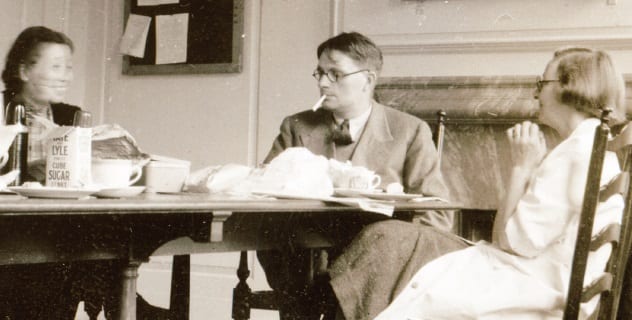
Joseph Needham, Dorothy Moyle, and Lu Gwei-djen were a trio of biochemists who studied the history of Chinese science and technology. Needham and Moyle were married first and worked together as fellows of the Royal Society. Needham was described as a friendly, active man with a keenness for pretty women.[4] Moyle, Needham, and an international team of experts collaborated on Science and Civilisation in China, one of the first series of books to praise China’s contributions to studies such as cartography and mineralogy. While working on this, Needham met and fell in love with Lu Gwei-djen, a biochemist and historian from China who was co-authoring the project.
Although there is no evidence that Moyle and Gwei-djen shared any romantic attraction, Moyle accepted Needham and Gwei-djen’s love without complaint. They lived together even after the project ended. When Moyle died in 1987, Needham and Gwei-djen married two years later. Unfortunately, their marriage would only last two years until Gwei-djen also died. Not to be separated for long, Needham died four years later.
6 The Roosevelts
Affairs In The White House
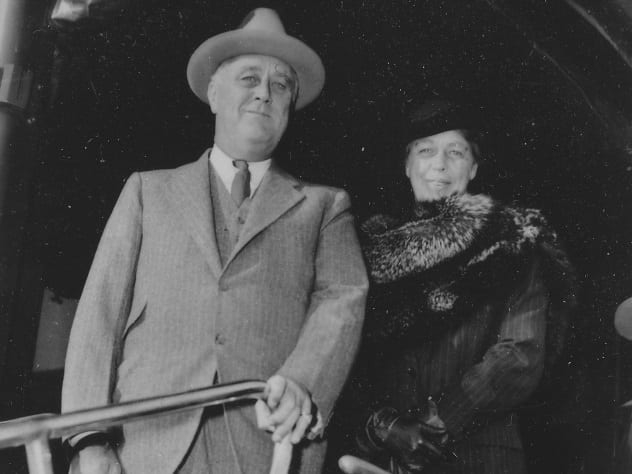
First Lady Eleanor and President Franklin Delano Roosevelt were nonconformists both in politics and the standards for a conventional marriage in their time. Over the years, their marriage shifted into an open relationship. Unfortunately, this development occurred with plenty of unhappy incidents. Franklin’s public affair with his secretary Lucy Mercer and Eleanor’s lack of motherly instincts caused many family traumas for them and their children.
Regardless of their faults, their marriage lasted 40 years until Franklin’s death in 1945. They resolved to give each other space to pursue other romantic relationships, according to the letters they sent several of their known acquaintances. Eleanor was rumored to have been in a relationship with Lorena Hickok, an openly gay journalist who would inspire Eleanor to hold her famous news conferences with solely female reporters to give them easier entry into the journalistic field. Eleanor wrote to Hickok nearly 20 times a day, and in many letters, Eleanor expressed much fondness for her. Eleanor was even given a sapphire ring from Hickok, which she was seen wearing at Franklin’s inauguration. This was one of several rumored relationships that either of Roosevelts partook in. There was also Eleanor’s bodyguard, Earl Miller, and Franklin’s secretary, Marguerite “Missy” LeHand.[5]
Biographer Jean-Edward Smith writes about the arrangement, “Remarkably, both ER and Franklin recognized, accepted, and encouraged the arrangement. [ . . . ] Eleanor and Franklin were strong-willed people who cared greatly for each other’s happiness but realized their own inability to provide for it.”
5 Rock Hudson And Phyllis Gates
In The Closet In The 1950s

The story of Rock Hudson and Phyllis Gates’s three-year marriage has a lot of “he said, she said.” Hudson was a famous Hollywood leading man in the 1950s. He was also gay, a fact which he and his agent, Henry Willson, did their best to hide. Phyllis Gates is a person with two stories. She said that when she was Willson’s secretary, he introduced her to Hudson, and she fell in love with the actor. With several gossip magazines questioning why Hudson wasn’t married, Hudson and Gates quickly began a romantic relationship that became a short and unhappy marriage. According to Gates, Hudson was frequently off filming movies and having affairs with men, expressed disdain at having sex with her, and even physically abused her until she finally filed for divorce. That’s her side of the story, which she went so far as to publish in her memoir, My Husband, Rock Hudson.
According to many Hollywood acquaintances, actor Mark Miller in particular, Gates was far from an innocent starlet who was duped into being a gay man’s beard. Gates was a lesbian who knew from the very beginning that Hudson was gay. She met him at a party on the Hollywood gay scene. Hudson’s friends said Gates married him for money, fame, and “fun.” Miller said of their relationship, “Phyllis had a double standard. That is: She could go out with women, but Hudson couldn’t make it with men . . . ”
Hudson died from AIDS-related complications in 1985, one of the first of many famous men to be taken by the disease. Decades earlier, one of Hudson’s boyfriends was Lee Garlington, a background actor at the time. They didn’t last, but on the actor’s deathbed, Hudson confessed that there were only two people that he truly loved: his mother and one other person. Gates’s memoir stated that she was the other person. Hudson’s biography stated that it was Garlington.[6]
4 Marlene Dietrich And Rudolf Sieber
The Glamorous And The Forgotten
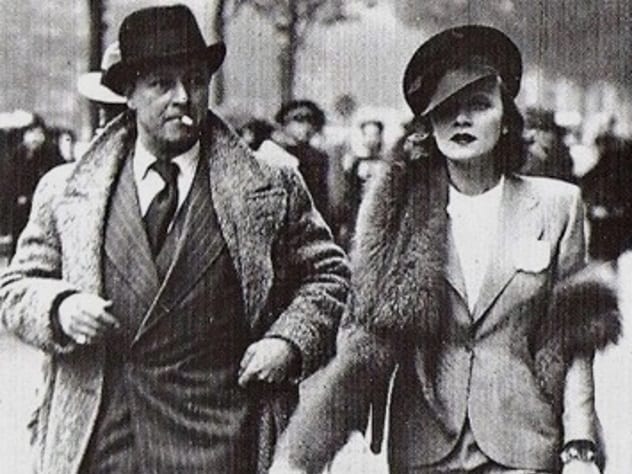
Marlene Dietrich was a German-American actress whose claim to fame was her androgynous fashion sense and glamorous lifestyle. She began her career in silent films in the 1920s and continued to shape her persona to fit the changing styles of several passing decades until the 1970s. Her personal life involved an incomprehensible number of affairs. And they were affairs because, although her husband was seldom mentioned, Dietrich was married. She was married to assistant director Rudolf Sieber, a man forgotten by all but one.
Dietrich’s many lovers [both men and women] were never something she felt the need to hide from her husband. In fact, Seiber would often receive the love letters from Dietrich’s lovers, filled with sarcastic comments from his wife. Some of her lovers reportedly included Greta Garbo, Frank Sinatra, Mercedes de Acosta, and John F. Kennedy.
None of this reportedly bothered Sieber. He only gave one interview in his life, and when asked about his wife’s affairs, he said, “Of course she has been rumored in love with this one and that one. She is a glamorous woman, and a glamorous woman is supposed to be surrounded by romance at all times.” Sieber even had a few affairs himself. His mistress Tamara Matul was an old friend of Dietrich. And even though Dietrich rarely spoke about her husband, their love was true. She rushed back home when he struck with a heart attack and nursed him through a fierce bout of pneumonia. She spoke up about him a few times, particularly in anger when rumors of divorce circulated. Dietrich proclaimed, “You do not consider the possibility that love might have something to do with our marriage! I consider Mr. Sieber the perfect husband and father.”[7]
3 Cole Porter And Linda Lee Thomas
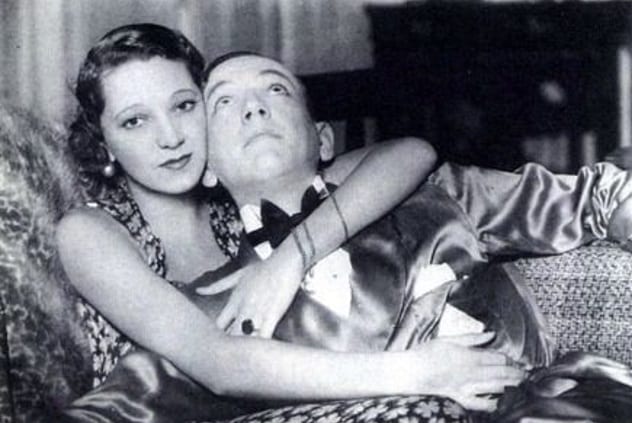
Another active member of vintage Hollywood gay scene, Cole Porter was an American songwriter and composer of predominantly musical theater. Porter married Linda Lee Thomas, who was 13 years older than Porter, in 1919. Porter was homosexual, a fact of which Linda was well aware.
Linda, already a socialite due to her family history, allowed Porter to access high society social circles that would fuel Porter’s bohemian and debauched lifestyle. They lived apart. Porter threw lavish parties to entertain male lovers such as Jack Cassidy and Ray Kelly (a person to whom Porter was so close that his children continue to receive Porter’s song royalties to this day). Porter’s taste for men was obvious to all.[8]
Linda Lee Thomas was much more subtle. There was speculation that Linda was a lesbian or asexual, so although she had affairs of her own, whether they involved men, women, or sex is unclear. Cole Porter and Linda Lee Thomas’s marriage was sexless but not necessarily without love. Linda was considering divorce when Porter had a horse-riding accident that left him permanently crippled in 1937, and she stayed with Porter until her death in 1954. Porter was devastated and slowly isolated himself until his death in 1964.
2 John Humphrey Noyes
The Oneida Community
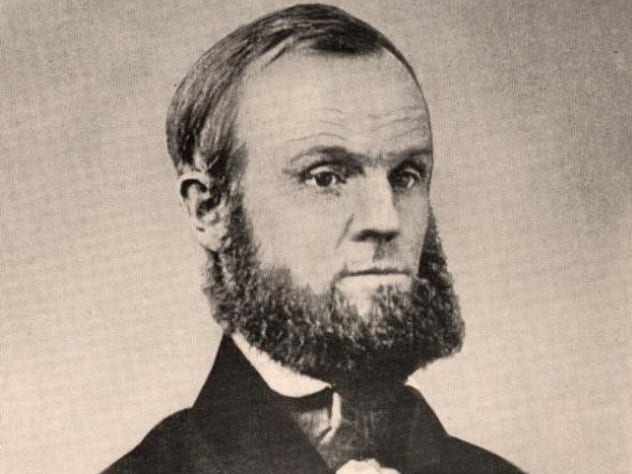
John H. Noyes was an American preacher and utopian socialist who founded a religious commune called the Oneida Community in 1848. The Oneida Community, established on religious philosophies, practiced an array of controversial sexual and social practices within its 300-person population.[9]
The community practiced “complex marriage” (a term coined by Noyes), which is a marriage-like relationship between more than two people, and communal ownership of all possessions. To control the population, they instructed men not to ejaculate inside their partners as a form of birth control, which turned out to be surprisingly effective. They gave women social freedoms they could get nowhere else, such as the ability to take part in community work, wear functional clothing, and a choice on whether they raised any children.
The stirpiculture that Oneida practiced had its pros and cons. Children, what few they had, were raised by committees, and although parents could visit, they would be separated for some time if the jurisdiction felt that their relationship was too affectionate. Mutual criticism mandated that all members could be “tried” a by a committee to eliminate “undesirable character traits.” Most of those tried accepted their “sentence” humbly and often took steps to fix whatever wrong they had committed without complaint.
Noyes was highly respected by his followers, so his opinions were held to high esteem. When Noyes had to leave for fear of being arrested, Oneida soon dissolved, but many of its citizens remained loyal followers who would write to him for advice until his death in 1886.
1 Alfred Kinsey And Clara McMillen
The Parents Of The Sexual Revolution
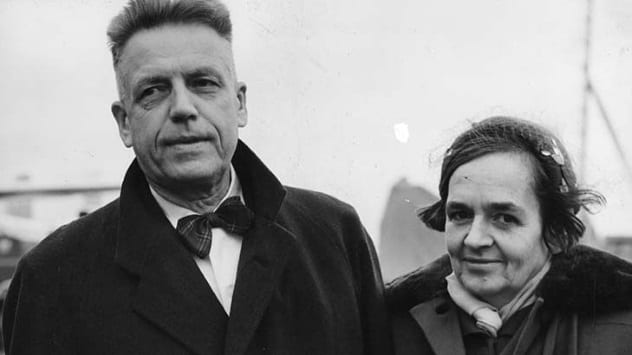
Alfred Kinsey was an American biologist and sexologist, most famously known for his research on human sexuality. His work caused mass controversy in the 1940s and 1950s, but today, his reports and the Kinsey scale/Heterosexual–Homosexual Rating Scale are praised for being the foundation of modern sexology and for their effects on modern values and the sexual revolution.
However, although all his work bears his name alone, he had a partner in his wife Clara McMillen. (McMillen’s nickname from Kinsey was “Mac,” and her nickname for him was “Prok.”) Kinsey was both bisexual and polyamorous, a fact that aligns with his fascination with human sexuality. Clara was a biologist and sexologist in all but title, and she gladly shared an open relationship with Kinsey throughout their marriage. Both of them slept with other people and even partook in orgies in which McMillen would reportedly serve persimmon pies during breaks.[10]
The two of them still had a sexual relationship with each other, siring four children. Alfred’s attempts to justify his own sexual habits (which went against what was deemed acceptable in his time) was done through cold, calculated science. He was the first person in his field to defend homosexuality on the basis of it being normal. His biography, written by James H. Jones, ends with this statement: “He was a pioneer, an explorer who blazed the trail for those who followed. It was he who convinced most Americans that human sexual behavior could and should be studied scientifically and, just as important, that scientific data should help inform discussions of social policy.” It is a shame that his wife remains largely forgotten in her contributions.
Savannah O. Skinner is a freelance writer and fiction author under the pen name S.O. Skinner.
Read about some truly bizarre relationships on Top 10 Bizarre Relationships and 10 More Truly Bizarre Relationships.


